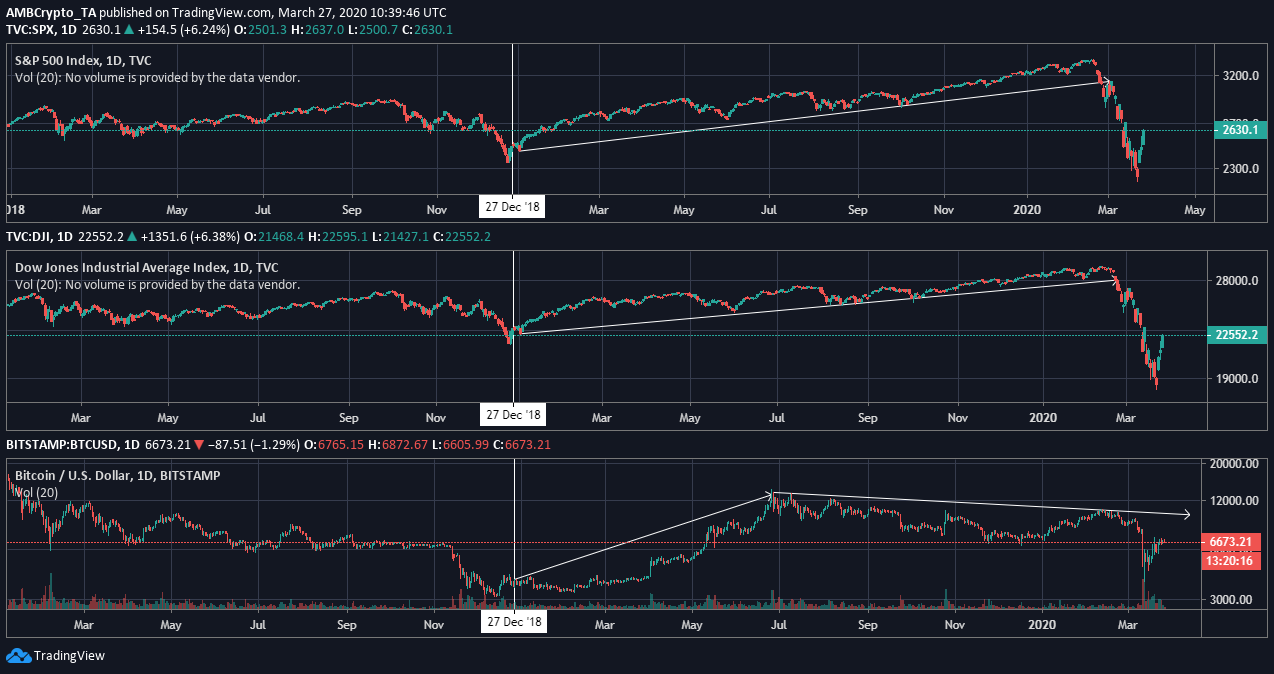Bitcoin, S&P 500, Dow Jones going their separate ways facing financial adversity

A torrid time has beckoned the global financial ecosystem, with both the traditional and digital asset market trying to post recoveries, at the time of writing. In fact, just like the cryptocurrency market, many traditional stocks were picturing their worst bearish period in years as the COVID-19 pandemic ravaged the market.
And while this raised questions against Bitcoin’s ‘uncorrelated narrative,’ the markets have moved away from each other quite dramatically since.
For instance, last week, Bitcoin underwent a quick recovery above $6000 after the $4000 crash, but Dow Jones registered yet another 18.5 percent decline. Further, over the past few days, while Bitcoin has consolidated between $6200-$6700, reports indicate that Dow Jones Industrial is on its best run since 1933.
This puts a question mark on the recent correlation between Bitcoin and traditional stocks and the divergence presented above.
According to a recent post by Weiss Crypto Ratings, traditional stocks and Bitcoin only correlated for a short period of time. However, they are currently at different long-term cycles, Weiss said. To better understand the narrative, it is important to compare charts of the S&P 500, Dow Jones Industrial, and Bitcoin, over the past year.

Source: TradingView
In order to understand the trend followed by Dow Jones, S&P 500, and Bitcoin since 27 December 2018, we need to analyze their market movement over the time period.
It is clear as day that the Dow Jones and S&P 500 have been on a steady increase since late-2018. Dow Jones’ stock value increased from $22628 to $28402 on 24 February 2020, whereas the S&P 500 registered a hike up to $3247 from $2444 on 3 March.
Both the stock assets have reflected long-term bull cycles, with the latest market plummet happening from a state of cyclical high.
However, the scenario for Bitcoin was completely different.
Bitcoin registered a bullish rally during the start of 2019 as well, but over the past 9 months, it has mostly been on a downtrend. The rally on 2020 did not surpass Bitcoin’s high of 2019, and the recent drop appeared on Bitcoin’s long-term cyclical low of $4000.
Although stocks have always been at the receiving end of a global financial crisis historically, this was Bitcoin’s first experience in a market fearful of recession. Even though the token recorded a pullback of its own, it can be assumed that both the asset classes have their own individual trends.






